How To Train Your Dog? The Three Pillars of Dog Obedience Training
If you have read my articles in the past, either on our DogBone website or in GunDog Magazine, you will likely start to recognize a few common themes when it comes to my writing style. I try to keep things simple. Simple is one way of saying it, but "not complicated" more accurately describes how I like to approach training and raising dogs. It's also how I tend to go when it comes to writing articles, filming dog training videos, or producing any form of obedience training content for that matter. I just don't believe that any of this is overly complex. I do, however, think it takes an understanding of some basic principles, a plan of action, a good amount of commitment and work, and ultimately alot of patience.
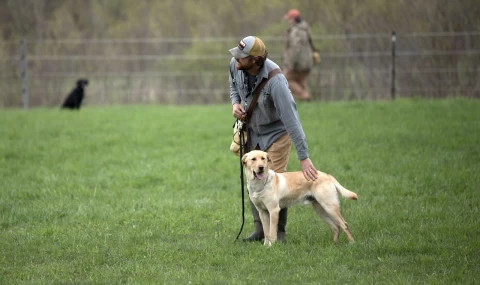 We recently finished up a series of three DogBone Handlers Workshops held this spring here in Wisconsin. Over two long weekends in April and May, we had the opportunity to work with 40 different dogs and handlers from nine different states, all looking for guidance on how to train their dog. I absolutely love these opportunities to train new dogs of all ages and breeds, but the focus on these workshops is not on training dogs. Instead, we focus on training people. These workshops were for "Foundation Training" and held at our DogBone Headquarters, located near Pulaski, WI. The focus was just that, building a solid foundation underneath our dogs in order to create an obedient dog that is be able to take the next steps in training, no matter what your end goals are with the dog. Remember what I mentioned earlier about trying to keep things simple? You have to first walk before you can run. The idea of a sound foundation is both what our DogBone Workshop series has been built on and is also where everything revolves around when it comes to my training goals. The level of importance it has when it comes to your dog and you finding success cannot be overstated.
We recently finished up a series of three DogBone Handlers Workshops held this spring here in Wisconsin. Over two long weekends in April and May, we had the opportunity to work with 40 different dogs and handlers from nine different states, all looking for guidance on how to train their dog. I absolutely love these opportunities to train new dogs of all ages and breeds, but the focus on these workshops is not on training dogs. Instead, we focus on training people. These workshops were for "Foundation Training" and held at our DogBone Headquarters, located near Pulaski, WI. The focus was just that, building a solid foundation underneath our dogs in order to create an obedient dog that is be able to take the next steps in training, no matter what your end goals are with the dog. Remember what I mentioned earlier about trying to keep things simple? You have to first walk before you can run. The idea of a sound foundation is both what our DogBone Workshop series has been built on and is also where everything revolves around when it comes to my training goals. The level of importance it has when it comes to your dog and you finding success cannot be overstated.

The X's and O's of dog obedience training
I'm a sports fan and find it easy to relate things when it comes to training dogs back to sports analogies. In a lot of ways those analogies can also be related back to just about any aspect of life, dog related or not. I use some of these analogies to try to get folks to understand that there is a lot more to developing a hunting dog than the hunting part itself. Instead, the hunting part is at the top pyramid and requires the least amount of input from us as the handler. The bottom of the pyramid is the largest and most important part as it relates to being able to stand up.
The hunt, or top of the pyramid for a dog, are the equivalent to games and tournaments for a basketball player. Youth, high school, collegiate, or professional, it's all basketball just at varying levels. In order to even get to those levels, you first must break things down. What does it take to play the game of basketball well at any level? If your team simply plays games and enters tournaments, you will not see the same improvement that a team gains after spending many hours working on their fundamentals and foundation. Before anything there are a few skill sets needed to play the game: dribbling, shooting, passing. If you're missing any of these three skills, basketball will be very difficult if not impossible for a player to play well. In the case of most reading this article and where you are with your dogs in training, you're probably in the phase of youth or maybe high school basketball in relation. Heel, sit and recall: those are my dribble, shoot and pass when it comes to dog training. Each are important and necessary, some tend to come relatively easy while others take more work.
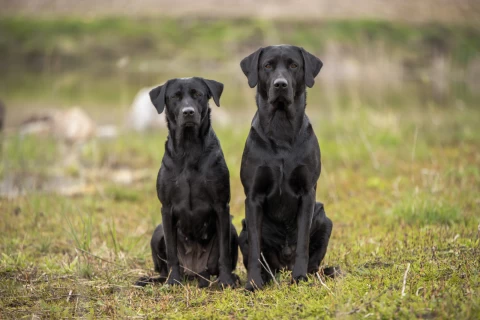
Sit Training = Dribble
I believe that all dog obedience training is simply building repetition and consistency until something becomes a habit. "Sit" is a lot like dribbling in that it is used A LOT. It can be practiced just about anywhere, anytime, and under any conditions. For the next 24 hours, keep track of how many times you use the command "sit". I think we use sit with our dogs as often as any other command throughout the day. It's a staple and necessary. It is an easy way to reel them back in and regain their focus. It's something that we do every time before letting them in and out of the kennel or crate, every time before we come in or out of a doorway, every time before we let them eat and every time I need them to just stay in one spot for any period of time. Note: We rarely differentiate the use of "sit" and "stay." Stay would just be a sit for a long time, so we just put our dogs on sit until we call them off. Sit is also usually one of the easier things for a puppy or young dog to pick up on. A few simple mechanical techniques make it easy for them to understand that when they park their butt, cued by your words, tone, whistle or simply body language, and you then time the action precisely with the appropriate praise...bingo. This skill can and should be practiced in all locations and the results should match regardless of outside influence. As with anything in training, start out in a very controlled location with few distractions in order to form the habit first, then add in more levels or layers of outside influence without results wavering. Sit in dog training is like dribbling because you need it all the time and you can practice it all the time.
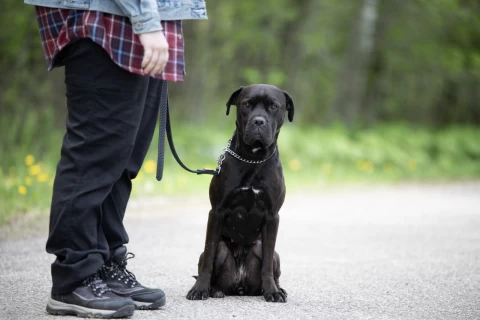 Recall Training = Passing
Recall Training = Passing
The ability to pass the ball is like the recall or "here" command. We've all played with or seen a ball hog. That person may be one of the most annoying members of the team...it's all about them! They constantly call for the ball and when they get it, they don't give it up easily. Too much dribbling leads to turnovers, too many forced shots lead to a lot of misses. This is a sure way to lose a lot of games. A dog that works so independently and does not come to you when called can be the equally or more annoying. It is also disrespectful and can be extremely frustrating. On the other hand, a player that sees the court well and has the ability to put the ball exactly where it needs to be in order for others to score, that is the kind of teammate we all look for and welcome to the roster. Many of the same things can be said about a puppy or dog with a solid recall. They just make life a lot easier and more convenient. Recall is another dog behavioral training skill that is relatively easy to hone early on when young puppys have a tendency to want to stick close to us. By using that window of time (typically from seven weeks to somewhere around the 12-14 week range) to engrain the habit of coming to us with a verbal command, whistle, and or body language, we form a habit that later will be tested and proven to be stronger than potential outside influences or distractions. But what about the older dogs that may be beyond that age window, can they still be trained to come when called? Of course, but you may have your work cut out for you depending on how strong the bad behavioral habits have already been formed. It seems to only take a second for bad habits to form, but much longer to reverse them. It can happen, but it takes a lot of time and repetition. The best way I have found to build in, fix, or improve a dog that has poor recall is by using a simple drill called reverse heel. However, in order to effectively use that drill, you will need what's coming next...heel training. The answer ABSOLUTELY IS NOT a shock collar! (I have never used and will not use shock collars. That's probably worth a whole other article someday!) Again, by setting your dog up for success and then rewarding and praising the appropriate behavior at the correct time we are building in a key foundational dog training tool that is used often in obedience training and ultimately in everyday scenarios.
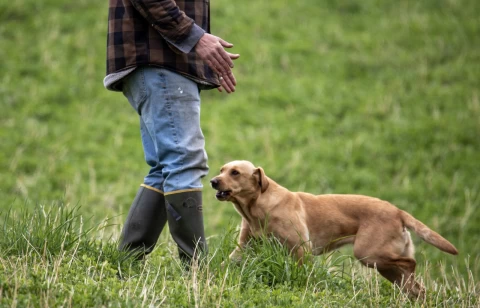 Heel Training = Shooting
Heel Training = Shooting
I liken heel dog training to shooting in this article for a few reasons. First off, shooting when it relates to basketball is usually looked at to be the "fun stuff". For me, good heel work really is fun because it allows me to do so many activities with them that are enjoyable. When we get really good at it, we are able to do heel work off-lead with confidence which adds a whole other level of freedom and true teamwork. Before starting in on it, I think I should probably define what I mean by "heel" as I find many aren't clear on what it really is. I use the term "heel", meaning to have the dog be in a specific position in relation to myself. For me, I like the dog to be on my left-hand side with their front right shoulder equal to or slightly behind my left knee or thigh. The specific spot, right or left-hand side, etc. isn't important. Being consistent, particularly when first starting heel training with your dog is very important. Pick one side or the other to start out and if you decide to switch or add the other side down the road you certainly can. I always start my dogs on the left-hand side and as they get older and understand the idea I find it handy to have them able to do it well on both sides of me, dependent on the situation. I'm also using heel as the shooting analogy as it relates to basketball because both take an incredible amount of work to perfect. It's nothing for a good shooter to put up 1,000 shots in a workout session lasting long periods of time. That might not sound like a lot but try it once. After about 200 shots, my arms are about ready to fall off!
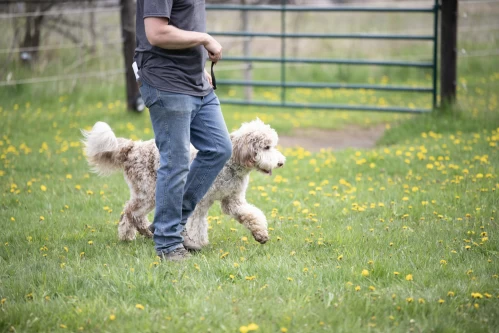 I don't recommend long sessions when it comes to working with your dog, but the amount of sessions and the ongoing work when it comes to heel training can be wearing. It's a lot easier to just let them run about or pull you along when out for a stroll. That's your dog taking you for a walk... we want the reverse. The connection between you and the dog in those scenarios is little to none. Heel work requires the dog to "feel" you and for you to "feel" the dog. It starts physically through the use of the lead or leash and collar, and eventually, if done properly, you can begin to eliminate the need for the leads and collars all together. It is the best way I know how to hook in with my dogs, feel connection, and ultimately build trust and develop the ability to read each other. All critical skills for both the handler and the dog. Heel work is not complicated and with the use of several simple drills and then variations of those drills, you will have your dog looking for you to lead as well as set the pace and tempo. They literally will be looking to you, and when you start to get their eyes, you'll know you're on the right track. Heel training is absolutely one of the most important aspects of dog behavior training, as it is really where we establish that we are the leader in this relationship in a way that builds trust and connection.
I don't recommend long sessions when it comes to working with your dog, but the amount of sessions and the ongoing work when it comes to heel training can be wearing. It's a lot easier to just let them run about or pull you along when out for a stroll. That's your dog taking you for a walk... we want the reverse. The connection between you and the dog in those scenarios is little to none. Heel work requires the dog to "feel" you and for you to "feel" the dog. It starts physically through the use of the lead or leash and collar, and eventually, if done properly, you can begin to eliminate the need for the leads and collars all together. It is the best way I know how to hook in with my dogs, feel connection, and ultimately build trust and develop the ability to read each other. All critical skills for both the handler and the dog. Heel work is not complicated and with the use of several simple drills and then variations of those drills, you will have your dog looking for you to lead as well as set the pace and tempo. They literally will be looking to you, and when you start to get their eyes, you'll know you're on the right track. Heel training is absolutely one of the most important aspects of dog behavior training, as it is really where we establish that we are the leader in this relationship in a way that builds trust and connection.
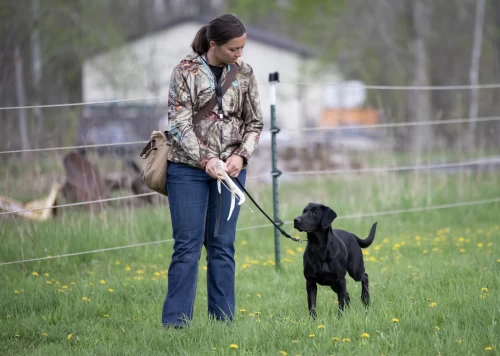 So, back to the question of how to train your dog? These are three simple skills used to build your dog's foundation. Once you have those three obedience skills mastered, you are limited by very little as far as where you would like to take your dog's training. Missing any of those links in the chain will become very clear when you go to the field to work on more advanced drills. The foundation is such a key to all of my training that I spend the majority of our time when it comes to Handlers Workshops covering just that. I recently spent a great amount of time and effort revising and re-filming several dog training videos in a series that we produced, which are all available to watch in our DogBone Training Library. What was once over 2 ½ hours of training information in our old DVD covering the foundation, has now been expanded to over 7 hours of instruction! And of that information, I would say that 85% or more covers the three things I mentioned in this article: Sit, Recall and Heel. It's just that important if you have aspirations to do the stuff on the top of the pyramid.
So, back to the question of how to train your dog? These are three simple skills used to build your dog's foundation. Once you have those three obedience skills mastered, you are limited by very little as far as where you would like to take your dog's training. Missing any of those links in the chain will become very clear when you go to the field to work on more advanced drills. The foundation is such a key to all of my training that I spend the majority of our time when it comes to Handlers Workshops covering just that. I recently spent a great amount of time and effort revising and re-filming several dog training videos in a series that we produced, which are all available to watch in our DogBone Training Library. What was once over 2 ½ hours of training information in our old DVD covering the foundation, has now been expanded to over 7 hours of instruction! And of that information, I would say that 85% or more covers the three things I mentioned in this article: Sit, Recall and Heel. It's just that important if you have aspirations to do the stuff on the top of the pyramid.
Best of luck in your dog training endeavors,
Jeremy
For DogBone Dog Training Products: DB Store
For video dog training content: DB Training Library
For our podcast: The DogBone Podcast
For more obedience dog training articles: Jeremy's Journal

 About
About Reviews
Reviews Free Videos
Free Videos Journal
Journal Podcast
Podcast

1 Comment
Excellent article Jeremy. I have two labs that I'm training. Your advice and training techniques are my main training program with my dogs. My Jax is off lead now,heel,recall and remote sit. Tasha is still on lead but is doing very well with her training. Remote sit has been a challenge with her!! But we keep working on it. Thank you so much for all your advice, an excellent training videos that you produce.
John